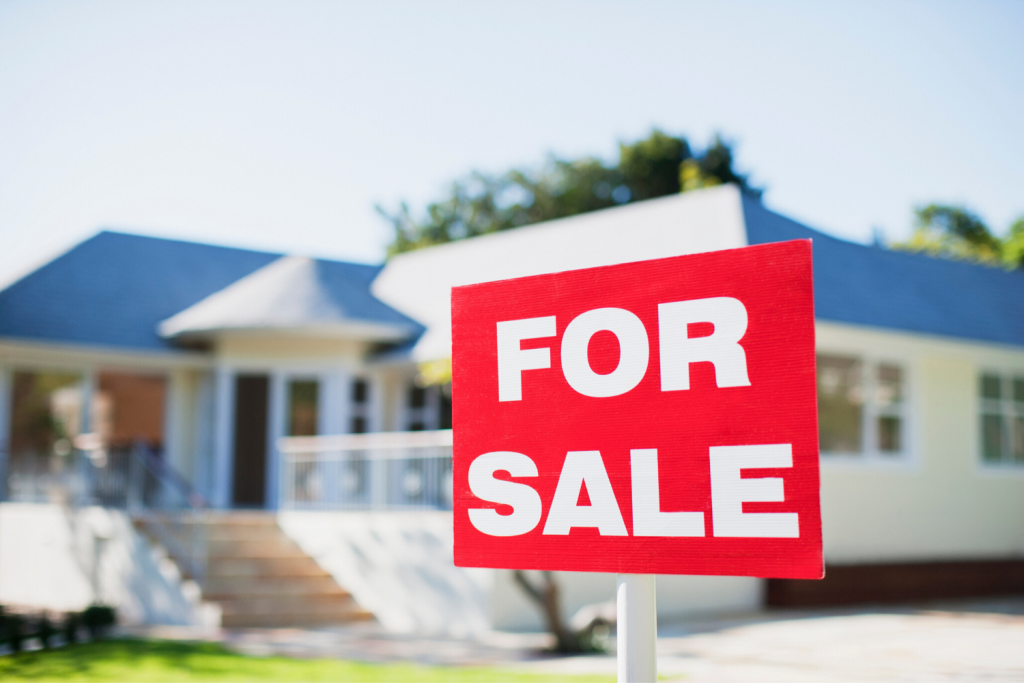Sometimes it happens that you put a house up for sale and despite your best efforts it just won’t sell. You may have acquired it for a good price and renovated the whole thing, but that doesn’t mean that it will sell quickly once it hits the market. Even the nicest properties on the market can end up struggling to sell, due to a variety of reasons. This is an investor’s worst nightmare, particularly if they are flipping houses using external financing. Every day that the house goes unsold, the investor loses money.
If your property has been on the market for more than 30 days with no serious incoming offers or dwindling number of showings, it’s time to take a step back and reevaluate. The average time at market in real estate highly depends on the area, but you should realistically see potential buyers make some moves in the first month. If you are worried about this happening to you, or you’re in this situation right now – don’t panic.
These are the most common reasons why houses don’t sell and how to fix them:
Table of Contents
Pricing Problems
If you haven’t gotten many buyers or viewers for your home in the first few weeks of having it on the market, the chances are good that it’s priced too high.
Typically, if it’s not the property condition that is the issue, it’s probably the pricing. Ideally, at the start of the flipping process, you would take a look at other properties in the area, speak to a real estate appraiser or take other steps to get a more clear understanding of suitable pricing for your home. When skipped, this is the step that can trip you up later.
This is a routine mistake made by homeowners who do not know the comparative value of their property. The problem is that it can be difficult to remedy pricing on a property without suffering negative effects. The obvious solution is to reduce the price, but this needs to be approached carefully. Continuous decreases in listing price can cause buyers to question if there is something wrong with the house. When in doubt, confer with other realtors and real estate investors for pricing advice before listing the property for sale.
If your house is already on the market and you are worried about overpricing, try listening to the feedback you get at open houses or showings or comparing your property listing price to other similar homes in the neighborhood. Leaving the property at the same price will cause the listing to go stale – it’s better to reduce the price by a few thousand dollars after the first three to four weeks and to track the results thereafter.
Staging Badly
Staging refers to the beautification of the property prior to putting it on show for potential buyers. This step allows you to showcase the strengths of the property and minimize it’s weaknesses, with the ultimate goal of making it more desirable to buyers. When presented in the best way possible, you give your home the best chance possible of selling soon after going on the market.
Staged homes often sell for more and in shorter time frames. When surveyed, almost 100% of realtors considered effective home staging to be useful when selling properties. A home that has been staged well can also sell up to 80% faster than non-staged homes depending on the property type and location. Unstaged properties, or badly staged ones, can make even the nicest properties feel small, cluttered, or dark. Staging is often a delicate balancing act that requires you to fill the home without cluttering it or making it feel too personalized. You want potential buyers to walk in and see the house as somewhere they can imagine living, not somewhere they can imagine someone else living.
Bad staging can fail to show off the home’s true assets, and even draw attention to areas you are hoping to avoid. A professional stager can help you show your property at it’s best – if doing staging yourself, try to keep things neutral and uncluttered. Keep the palette to neutral colors, make sure everything is clean, depersonalized, and well-lit.
In times when things are becoming increasingly digital, it’s possible to do some virtual staging for your home. Using Photoshop and other editing tools, everything from furniture to accessories can be added to your property and presented online. There is, however, a caveat to this; while adding furniture and decor with editing is acceptable, changing the physical characteristics of the property is not. There is no faster way to lose potential buyers than to have them show up to a home viewing which looks nothing like the listing. When using this method, be sure to include an image with furniture added alongside an image of the empty property. This will give buyers an idea of what could be possible in the space without making them feel duped. Full disclosure is the differentiator here.
Listing Issues
The first exposure that many will have to your home will be through your real estate listing posted online. Nowadays, all potential buyers rely on the internet to pre-vet houses they are interested in viewing, and the neighborhoods they are interested in buying in. A huge part of this will be your listing photos. It’s key to have great shots that show off the home at it’s best. Some argue that your online property listing is the digital version of curb appeal, and it should reflect what you want buyers to see in it.
Property listings with professional real estate photos will garner more online traffic and scheduled viewings. It’s worth getting a professional to redo your listing photos. A professional photographer will know how to get the best angles and lighting, and it is highly recommended that you make use of a pro. This is one of those instances where the upfront cost can have a long term payoff.
Professional photographers are better equipped to take high-resolution images that will highlight your staging efforts and all the right angles. It’s unlikely that you will get the same level of results taking the photos yourself on an iPhone!
Curb Appeal Is Lacking
Curb appeal can almost be considered to be the staging of the property’s exterior. This aspect is another “first impression” that cannot be underestimated. Your curb appeal is what entices potential buyers to schedule viewings and make offers and refers to the visual attractiveness of the house from the outside. If regular maintenance has been done on the property the chances are good that there won’t be much attention you need to focus here. However, if the property has been standing vacant for some time the exterior and landscaping will likely need redoing before you put it on the market.
Luckily curb appeal is one of the easiest things to fix at a more affordable cost. You should start by ensuring that windows are cleaned, any chips are repainted, and that the fencing is in good shape and looks neat. From there, you should put some effort into landscaping, make sure any lawns are in good condition, and plant some flowers or trees in spots that get lots of light. Some real estate experts believe that proper landscaping has an ROI upwards of 200% and that it can contribute to at least 28% of your home value.
This is a project you can take on yourself, or you can make use of a professional landscaper. The average national cost of installing landscaping is $3,321, including planting and other work.
Fitting The Mold
Not all properties can instantly be met with market demand, especially if the property has unique features. Perhaps the home is distinctly different from the rest of the neighborhood, is extremely large, or has another distinct feature. Too many bathrooms? Strange architecture? Distinctly stuck in another era? All of these issues and more can lead to a home spending longer than average on the market. These properties can also take slightly longer on average to sell, but that doesn’t mean that it will be impossible to find a buyer. You may just have to approach the sale slightly differently.
Using staging and lighting to present the property in the best possible way will go a long way in making it appeal to buyers. Unique homes can also see more potential buyers via open houses – advertising one on a house like this will entice curious parties to come to see it in person and could convince them that it’s character, instead of plain weird.
When looking for a buyer for this type of home, you want to ensure that your marketing strategy is targeted at your buyer demographic. Try and cast any unusual features the house has in a positive light, or consider changing them if push comes to shove. You’ll need to look at the unique feature carefully and decide whether it is an advantage or disadvantage for the property. If you are looking to sell a house quickly, it may be worth changing these stand out features into something more practical and more likely to be a definitive hit with potential buyers.
You may also want to consider throwing potential buyers a bone. With a unique property, you could offer lease-to-own deals or other financial help like covering closing costs. This could be just the incentive needed for someone to make an offer.
Final Thoughts
If your property isn’t selling as fast as you originally expected, don’t panic; take a step back and critically evaluate pricing, staging, your listing, curb appeal, and any property features that may be affecting your sale. These are all characteristics that can be fixed with the right approach. There are many ways to get your home sale back on track, and the worst-case scenario is to take the property off the market and relist it after making some changes. Remember that whether it is a buyer/seller’s market will have a significant impact on the listing price you set, so it is best to do some research on comparable properties in the area prior to creating your listing.
James Felt, writing for the New York Times, once stated:’“The smallest patch of green to arrest the monotony of asphalt and concrete is as important to the value of real estate as streets, sewers and convenient shopping.” In summary, even the smallest things can make a difference. Sometimes, the devil is in the details and it’s up to you to figure it out.


